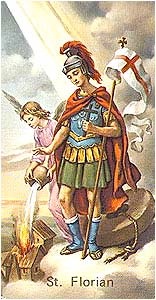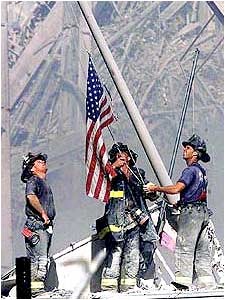Firefighter symbols and traditions



History of the Maltese Cross
The insignia of the fire service is the Cross Pattee-Nowy, otherwise known as the Maltese Cross. The cross represents the fire service ideals of saving lives and extinguishing fires.
The fire service borrows the emblem of the cross from the Knights of St. John of Jerusalem (Knights Hospitallers), a charitable, non-military organization that existed during the 11th and 12th centuries that helped the sick and poor in setting up hospices and hospitals. Later, they assisted the Knights of the Crusades through their goodwill and also through military assistance in an effort to the Island of Malta, the island for which the Maltese Cross was named.
The need for an identifiable emblem for the knights had become crucial. Because of the extensive armor which covered their entire bodies and faces, the knights were unable to distinguish friend from foe in battle. They chose the cross of Calvary as their symbol, since they fought their battles as a holy cause. The cross was later called the "Maltese Cross" and represented the principles of charity, loyalty, chivalry, gallantry, generosity to friend and foe, protection of the weak, and dexterity in service.
During the Crusades, many knights became fire fighters out of necessity. Their enemies had resorted to throwing glass bombs containing naptha and sailing their war vessels containing naptha, rosin, sulfur, and flaming oil into the vessels of the knights. Many knights were called to perform heroic deeds by rescuing fellow knights and extinguishing fires. In acknowledgement of these feats, the cross worn by these knights was decorated and inscribed. This was considered a most honorable acclaim.
The History of St. Florian
Florian was born about 250 A.D. in Cetium (now in Austria). He joined the Roman army and advanced in the ranks. However, the Emperor Diocletian was shocked to learn that Florian did not carry out his orders to persecute all Christians in the area, and, thus, was sentenced to death by fire. Standing on the funeral pyre, Florian is reputed to have challenged the Roman soldiers to light the fire, saying "If you do, I will climb to heaven on the flames." Apprehensive to his words, instead of burning Florian, they drowned him. His body was recovered and buried.
About 600 years later, sometime between 900-955, a monastery was erected near Florian's tomb, and subsequently the village of St. Florian grew up around it.
St. Florian was adopted as patron saint of Poland after Pope Lucius III consented to the request of King Casimir to send relics of Florian to that country. Soon after, a person was saved from a fire by invoking St. Florian's name. Since then, Florian has been invoked against fire and has generally been regarded in most countries as the patron saint of the fire service.

What are the words to the Fireman's Prayer?
When I am called to duty, God, whenever flames may rage;
Give me strength to save some life, whatever be its age.
Help me embrace a little child before it is too late
Or save an older person from the horror of that fate.
Enable me to be alert and hear the weakest shout,
And quickly and efficiently to put the fire out.
I want to fill my calling and to give the best in me,
To guard my every neighbor and protect his property.
And if, according to my fate, I am to lose my life;
Please bless with your protecting hand my children and my wife.
Author Unknown



